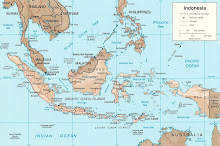 Tanjung Puting National Park is divided into four areas, each highlighting a different set of natural resources. First, Camp Leakey area, is devoted to the research and rehabilitation of adult orangutans. Second, Tanjung Harapan area, was developed for ecotourism, and hosts the information center, guest house, watch tower and camping ground. Third, Pantai Sungai Cabang area, is located alongside a white sand beach along with guest houses, an information center, shelter, watch tower, camp ground, dock and various other tourist activities. And fourth, Pondok Tanggui area, is home to pre-wild and adolescent orangutans.
Tanjung Puting National Park is divided into four areas, each highlighting a different set of natural resources. First, Camp Leakey area, is devoted to the research and rehabilitation of adult orangutans. Second, Tanjung Harapan area, was developed for ecotourism, and hosts the information center, guest house, watch tower and camping ground. Third, Pantai Sungai Cabang area, is located alongside a white sand beach along with guest houses, an information center, shelter, watch tower, camp ground, dock and various other tourist activities. And fourth, Pondok Tanggui area, is home to pre-wild and adolescent orangutans. Tanjung Putting National Park is also inhabited by various species of mammals. Among them is the best known species that makes the National Park best known, orangutan (Pongo pygmaeus), bekantan (Nasalis larvatus) - a large monkey which is found only in Borneo, long tail macaque (Macaca fascicularis), maroon leaf monkey (presbistis rubicunda), Agile gibbon (Hylobates agilis), grey gibbon (Hylobates mulleri), and Malayan sun bear (Helarctus malayanus). The types of large mammals such as kijang sambar, deer (Muntiacus muntjak), kancil (Tragulus javanicus), and wild lige (Sus barbatus) can be found in this area. In fact, several species of mammals such as water cow (Dugong dugong) and dolphins (the locals call it as Pesut) seen in the waters around the Park area.
Tanjung Putting National Park is also inhabited by various species of mammals. Among them is the best known species that makes the National Park best known, orangutan (Pongo pygmaeus), bekantan (Nasalis larvatus) - a large monkey which is found only in Borneo, long tail macaque (Macaca fascicularis), maroon leaf monkey (presbistis rubicunda), Agile gibbon (Hylobates agilis), grey gibbon (Hylobates mulleri), and Malayan sun bear (Helarctus malayanus). The types of large mammals such as kijang sambar, deer (Muntiacus muntjak), kancil (Tragulus javanicus), and wild lige (Sus barbatus) can be found in this area. In fact, several species of mammals such as water cow (Dugong dugong) and dolphins (the locals call it as Pesut) seen in the waters around the Park area.Tanjung Puting National Park lies in Kotawaringin Region, Province of Central Kalimantan, Borneo Island, Republic of Indonesia


